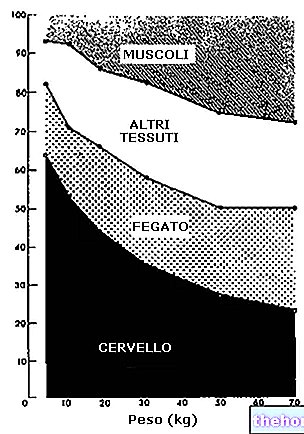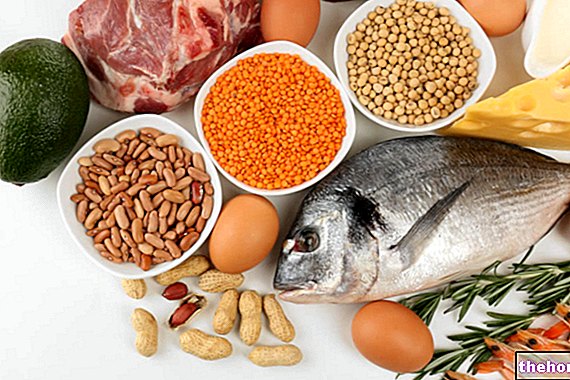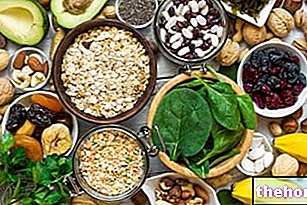The transesterification of fatty substances is a chemical process aimed at redistributing fatty acids in the triglyceride molecules;

Two main types of transesterification are known
- We speak of INTRAesterification when the transposition of fatty acids occurs within the individual glycerides of a fatty substance
- We speak of INTEResterification when the transposition of fatty acids takes place between the various glycerides of a mixture of two or more fatty substances
The simplest example to understand the potential of intersterification is to transfer part of the saturated fatty acids from the triglycerides of palm oil to the polyunsaturated counterpart of soybean oil. In this way it will be possible to increase the melting point of soybean oil, which will appear as a "new" fat substance, semi-solid at room temperature, from which it will be possible to obtain a vegetable margarine free of the dreaded hydrogenated fats and with a reduced percentage of fat. saturated.
In most vegetable fats, palmitic acid and stearic acid (generally) occupy position 1 and 3 respectively of the glycerol molecule, while any unsaturated fatty acids (such as oleic and linoleic) are typically found in position two Through transesterification we will obtain a fat with higher percentages of saturated fatty acids in position two.
Instead of modifying the chemical structure of fatty acids as occurs with hydrogenation, transesterification redistributes them in triglycerides, possibly using more than one lipid source, for example by engaging soybean oil (highly fluid at room temperature) and palm fat (completely concrete at room temperature).
It should be noted that intraesterification is also capable of modifying the solid-liquid balance of triglycerides in an oil, since it depends not only on the acidic composition but also on the distribution of fatty acids within the triglyceride itself.
Transesterification can take place according to a chemical or enzymatic process:
- chemical interesterification - in the presence of basic catalysts, such as sodium methylate, and adequate temperatures - determines non-selective rearrangements of fatty acids (it is a randomized process with random distribution of fatty acids)
- Enzymatic interesterification, exploiting immobilized lipases of microbial or fungal origin, is commonly used by industry for its selective modification of the position of the acs. fat in triglycerides (the process is therefore not random but targeted).
Critical issues
From the food health point of view, the major criticalities on the interesterification processes derive from the quality of the raw materials of origin, which:
- they are refined (with loss of a part of the original food value)
- to contain costs they can be hydrogenated with the presence of trans fatty acids
- they are generally characterized by the presence of tropical vegetable oils, which due to their richness in saturated fats have a negative impact on blood cholesterol levels and more generally on cardiovascular risk
Furthermore, the exchange of the natural positions of fatty acids raises doubts about the "metabolic impact of these" altered fats ". This modification, in fact, could have repercussions on cardiovascular health; preliminary studies show that in this regard the impact of interesterified dietary fats on levels of total cholesterol, LDL and HDL would be completely comparable to that of the natural counterpart.
Other Foods - Oils and Fats Peanut Butter Cocoa Butter Butter Greaves Wheat Germ Animal Fats Margarine Vegetable Cream Tropical Oils and Fats Frying Oils Vegetable Oils Peanut Oil Borage Oil Rapeseed Oil Krill Oil Poppy Seed Oil Seed Oil Pumpkin Avocado oil Hemp oil Safflower oil Coconut oil Cod liver oil Wheat germ oil Linseed oil Macadamia oil Corn oil Almond oil Hazelnut oil Walnut oil Olive oil Palm oil fish Rapeseed oil Rice oil Pomace oil Seed oil Soybean oil Grapeseed oil Extra virgin olive oil Sesame seeds and sesame oil Lard OTHER ARTICLES OILS AND FATS Categories Food Alcoholics Meat Cereals and derivatives Sweeteners Sweets Offal Fruit Dried fruit Milk and Derivatives Legumes Oils and Fats Fish and fishery products Salami Spices Vegetables Health recipes Appetizers Bread, Pizza and Brioche First courses Seconds pi acts Vegetables and Salads Sweets and Desserts Ice creams and sorbets Syrups, liqueurs and grappa Basic Preparations ---- In the Kitchen with leftovers Carnival recipes Christmas recipes Light diet recipes for Celiacs Recipes for Diabetics Recipes for Holidays Recipes for Valentine's Day Recipes for Vegetarians Protein Recipes Regional Recipes Vegan Recipes




.jpg)























